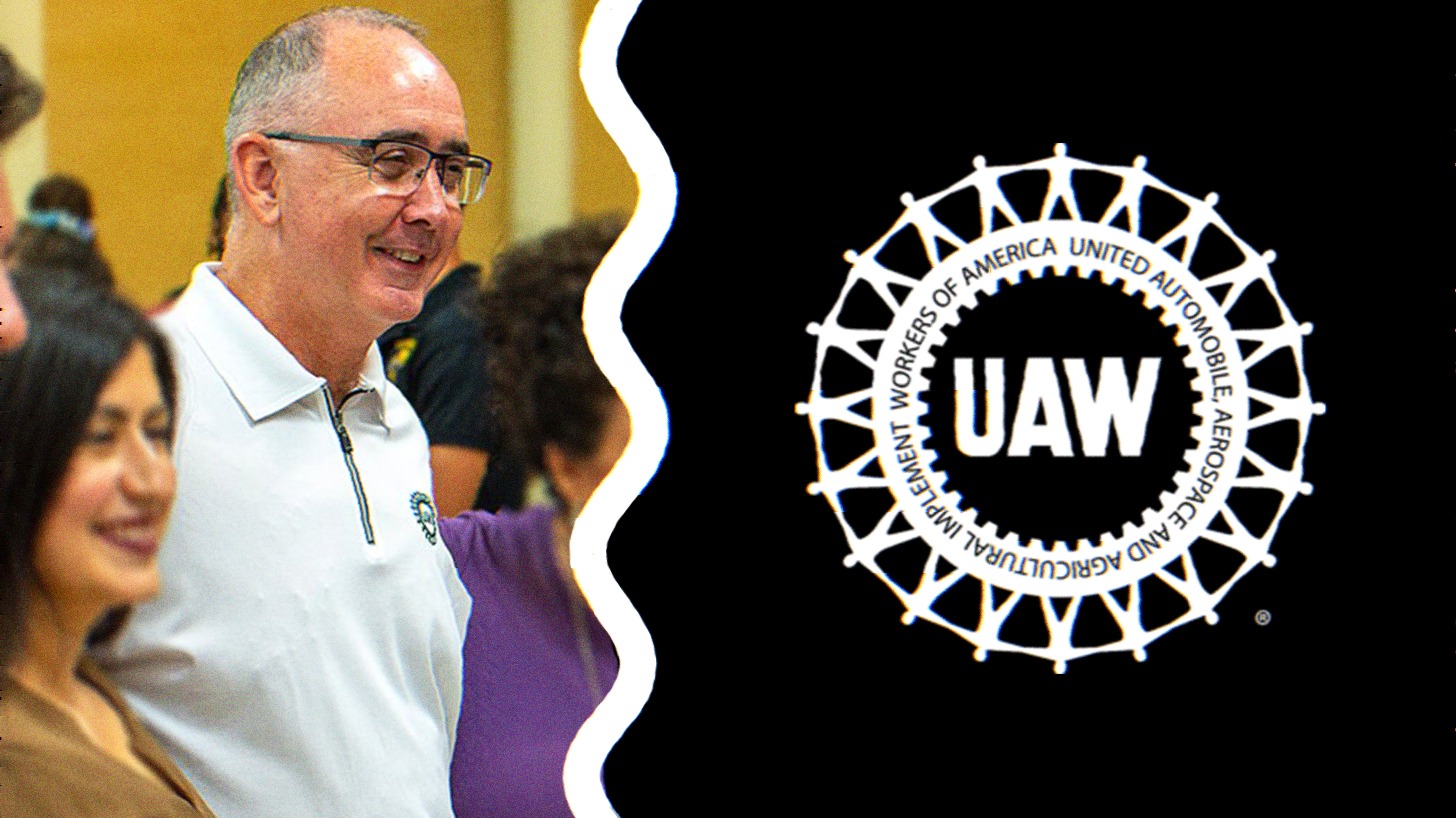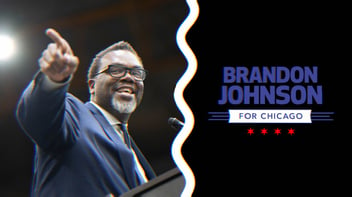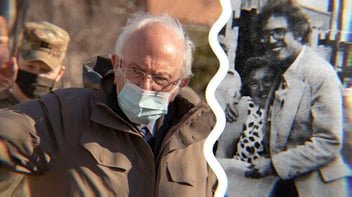Progressive Spotlight: Shawn Fain.
Is the UAW President the New Face of the Working Class?
 Image Description: A photo of Shawn Fain alongside the United Auto Workers logo.
Image Description: A photo of Shawn Fain alongside the United Auto Workers logo.
Let’s be honest: There were times during the recent United Auto Workers strike when you listened to UAW President Shawn Fain’s fiery rhetoric attacking the wealthy elite, lambasting auto companies for concentrating wealth and undermining workers’ rights, and condemning Donald Trump as anti-worker, and couldn’t help but wonder if this passionate advocate for the working class should run for higher office—like, the office.
Why not? What else could you ask for a labor leader who not only injected much-needed credibility into a reeling institution but who frequently wore an “Eat the Rich” shirt to public events and thoroughly debunked the notion that workers’ demands were contributing to rising vehicle costs?
Other than Sen. Bernie Sanders, name us a progressive with national recognition who has done more to shine a light on the dichotomy between the working class and the wealthy in recent years. That Fain injected himself into that conversation in such a short period—underscoring the impact of the UAW strike itself—is a testament to his abilities as not only a messenger but also as someone who appears to embody the cause he’s fighting for so genuinely.
As CNN put it last year, “Shawn Fain is one of the most important people in the US economy today. A year ago, almost no one knew who he was.”
A meteoric rise, indeed.
A review of some of his most impassioned, anti-billionaire class invectives suggests he’s more aligned with the public’s view of income inequality than most officials in leadership roles:
- “I’ll tell it to you straight. The billionaires and company executives think U.S. autoworkers are just dumb,” he said. “They think we don’t get it.”
“They look at me and they see some redneck from Indiana,” Fain continued. “They look at you and see somebody they would never have over for dinner or let ride on their yacht or fly on their private jet.”
- “The wealth inequality in this world and in this country is so out of control over the last 40 years, to where the few at the top are getting all the profits and everybody else has been left to fend for themselves,” Fain told The Nation. “When you talk wages, when you talk retirement security, when you talk adequate healthcare and just people having their lives back, their time back—those are issues that matter to not just union people, but to all working-class people.”
- “In the last four years, the price of cars went up 30%. [Automakers’] CEO pay went up 40%. No one said a word. No one had any complaints about that but God forbid the workers ask for their fair share,” Fain said on CNN. “It’s not [that] we’ll wreck the economy. We’ll wreck their economy—the economy that only works for the billionaire class and not the working class.”
Fain, as has been suggested, was built for this moment.
Before taking on the so-called Big Three automakers—General Motors, Ford and Stellantis (which includes such brands as Jeep, Chrysler, Dodge, and many other car makers)—Fain made a career as a unionized worker. He first joined the UAW in 1994 as an electrician at a plant in Indiana. It turns out, the UAW was in his blood: Fain followed in the footsteps of two of his grandparents who were both members.
Fain’s devotion to his workers isn’t new, either. In 2007, Fain served as Plant Shop Chairman at Local 1166 in Indiana during a pivotal negotiating period between UAW leadership and car makers. Fain convinced those at the plant to vote against ratification and punctuated his dissatisfaction by telling UAW officials they were on the losing end of the negotiation (though he used much more violent language).
Before winning the UAW election for president in the spring of 2023, Fain served in a litany of other roles at the union, including as a twice-elected negotiator (2009 and 2012) and later as chair of the International Skilled Trades Sub-committee, including other roles.
Fain’s margin of victory in the race for president was slim—less than 500 votes. He immediately formulated a strategy to not only win major concessions from the Big Three automakers but also make up for what he felt were brutal losses for the union during the Great Recession. The strategy of unpredictable, targeted strikes seemingly caught Ford, GM and Stellantis off guard and they never recovered. The strategic action also allowed the UAW to conserve much-needed strike funds, positioning them to continue the action for longer than initially expected.
The six-week action culminated in significant raises for unionized workers, bonuses for retirees, and the reopening of a previously shuttered plant in Belvidere, Ill, among other wins.
Even the Federal Reserve was forced to admit that the deal was good for workers: “The union tapped the [brakes] on Detroit Three production and managed to regain many of the benefits it had given up around the time of the Great Recession.”
As for Fain, he hoped the strike would galvanize workers across the country, potentially restoring some of the losses labor has lost over decades.
“If we’re going to truly take on the billionaire class and rebuild the economy so that it starts to work for the benefit of the many and not the few,” Fain said, “then it’s important that we not only strike, but that we strike together.”
Image Sources
- InformedImages, CC BY-SA 4.0, via Wikimedia Commons. Changes were made.
- UAW logo via uaw.org. Changes were made.
Rashed Mian is the managing editor of the award-winning News Beat podcast and co-founder of the newly launched Free The Press (FTP) Substack newsletter. Throughout his career, he has reported on a wide range of issues, with a particular focus on civil liberties, systemic injustice and U.S. hegemony. You can find Rashed on X @rashedmian and on Bluesky @rashedmian.bsky.social.


